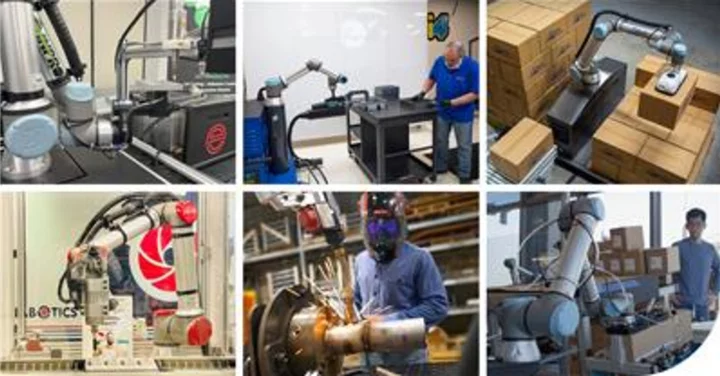
Universal Robots (UR) Debuts the World’s First Cobot Spot Welder and New Cobot-Powered Palletizing and Machine Tending Cells Among More Than 60 UR Cobot Exhibits at Automate 2023
NOVI, Mich.--(BUSINESS WIRE)--May 11, 2023--
2023-05-12 00:18

How one lake has captured the moment we changed the world forever
The floor of Crawford Lake in Ontario acts like a storybook, preserving Earth’s recent history in chronological order. Crawford Lake reveals the activities of local Iroquoian communities from the late 13th to 15th centuries, all the way through to the present day. This is because Crawford Lake is a meromictic lake, meaning that the dense bottom layer of water does not mix with the less dense upper layers. “The isolated bottom layer of water remains under disturbed, enabling the accumulation of clearly laminated valves which record precise information about the time during which they were deposited,” according to the Anthropocene Working Group. Experts have nominated Crawford Lake as representation for the start of the Anthropocene epoch, a proposed new geological era characterised by significant changes to the planet’s surface as a result of human behaviour. The Anthropocene is yet to be officially accepted as a unit of geologic time, but in 2016 a working group under the guidance of an International Commission on Stratigraphy subcommittee agreed that human behaviour has left scars so deep that they will remain evident even into the distant future. Sign up to our free Indy100 weekly newsletter One of the most notable markers of the Anthropocene is the appearance of plutonium, a radioactive material that appeared in the mid-20th century as a result of hydrogen bomb tests. “The presence of plutonium gives us a stark indicator of when humanity became such a dominant force that it could leave a unique global ‘fingerprint’ on our planet,” explained Professor Andrew Cundy, Chair in Environmental Radiochemistry at the University of Southampton and member of the Anthropocene Working Group. “In nature, plutonium is only present in trace amounts. But in the early-1950s, when the first hydrogen bomb tests took place, we see an unprecedented increase and then spike in the levels of plutonium in core samples from around the world. We then see a decline in plutonium from the mid-1960s onwards when the Nuclear Test-Ban Treaty came into effect.” Agreeing on a simple measure that defines the boundary between chapters in Earth’s history is just the first step. This measure requires agreement among scientists on a single location to define the boundaries. Known as the Global Boundary Stratotype Section and Point, or a golden spike, plays a crucial role in standardising these borders between epochs. The Anthropocene Working Group has been evaluating potential golden spike sites, from Oued Akrech, Morocco, to Alano di Piave, Italy. After spending three years assessing the qualities of a dozen potential golden spikes for the Anthropocene, finally the AGW has landed on Crawford Lake. “Crawford Lake is so special because it allows us to see at annual resolution the changes in Earth history throughout two separate periods of human impact on this small lake,” micropalaeontologist Francine McCarthy of Brock University in Canada, a voting member of the AGW, said at a press briefing. The lake’s unique properties, such as its small size, depth, and lack of water mixing create sediments that precisely record environmental changes over the past millennia. To officially establish the Anthropocene in the International Chronostratigraphic Chart, the golden spike at Crawford Lake must undergo a series of voting by various commissions and unions. If successful, it will mark the moment when human activities permanently altered the planet. Have your say in our news democracy. Click the upvote icon at the top of the page to help raise this article through the indy100 rankings.
2023-07-16 17:16
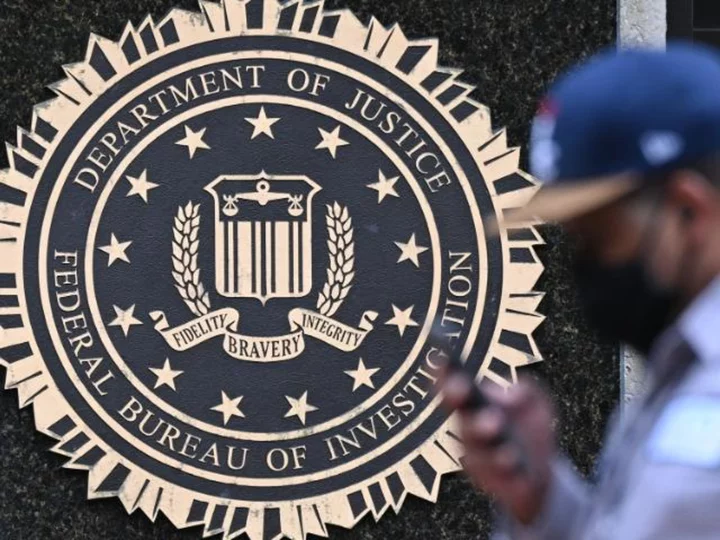
FBI searched for name of US senator facing foreign threat in latest improper use of intelligence database
Newly declassified court documents revealed Friday that the FBI improperly searched for the name of a US senator in an intelligence database after indications of a foreign threat against the lawmaker, as the intelligence program has come under a barrage of criticism in Congress and from privacy advocates.
2023-07-22 03:51

Disney cancels $1bn Florida theme park extension amid war with DeSantis
The Walt Disney Company has pulled the plug on a $1bn office complex in Orlando, following a warning from Disney leadership that billions of dollars in projects were on the line after Florida Governor Ron DeSantis escalated his feud with the company. The development scheduled for construction in the Orlando area was set to bring 2,000 jobs to the region, with 1,000 employees expected to be relocated from southern California. In an email to employees on 18 May, Disney’s theme park and consumer products chair Josh D’Amaro pointed to “changing business conditions” for the cancellation of the 60-acre Lake Nona Town Center project, according to The New York Times, which first reported the move. “I remain optimistic about the direction of our Walt Disney World business,” he added, noting that the company has still planned $17bn in projects over the next decade its Disney World campus. “I hope we’re able to,” he said. For years, Florida legislators and the governor’s office enjoyed a close relationship with the state’s largest taxpayers, among the state’s largest employers, which has wielded enormous political influence while bringing in billions of dollars to the state each year. Now, the company and DeSantis allies are suing one another, following a year-long feud over opposition to what opponents have called Florida’s “Don’t Say Gay” law that boiled over into political and legal battles that could shape the company’s business in the state. Moments after board appointed by Mr DeSantis voted to strip the company’s control of its Florida park, Disney filed a federal lawsuit against the governor and state officials alleging a “targeted campaign of government retaliation” for “expressing a political viewpoint.” The lawsuit follows the governor’s state takeover of the Reedy Creek Improvement District, now the Central Florida Tourism Oversight District, made up of conservative activists and DeSantis loyalists, a move that followed Florida Republicans’ punitive measures against the company after its public opposition to the “Don’t Say Gay” law. Days later, the board voted to sue Disney in state court. In March, Disney slammed the governor’s “anti-business” approach to the company, which Mr DeSantis has accused of advancing a “woke agenda” while his administration targets LGBT+ people and their families with sweeping laws to control public school education, healthcare access and speech. The governor dissolved a decades-old municipal district that allowed Disney to control its own land use, zoning rules and public services, without putting a tax burden on Florida residents. In effect, Disney taxed itself to foot the district’s bill for its municipal needs. “Does the state want us to invest more, employ more people, and pay more taxes, or not?” Disney CEO Bob Iger said on a conference call with analysts last week. A statement from Disney said the company has decided to pull out of the new campus construction “given the considerable changes that have occurred since the announcement of this project, including new leadership and changing business conditions.” The “Parental Rights in Education Act” – what opponents have called “Don’t Say Gay” – prohibits instruction of “sexual orientation or gender identity” from kindergarten through the third grade and any such discussion “that is not age-appropriate or developmentally appropriate for students” in other grades. The governor recently expanded the law to explicitly extend such restrictions to all grades. Critics have warned that the broadly written law threatens to freeze classroom speech involving LGBT+ people and issues, from civil rights history lessons to discussion of LGBT+ students, school staff and their families. Following passage of the Florida law, lawmakers across the US and in Congress have introduced similar legislation, including more than two dozen measures in current legislative sessions. Read More DeSantis v Disney: Why Florida’s governor is at war with the Mouse ‘We will not be erased’: Critics slam Ron DeSantis for unprecedented bills attacking LGBTQ+ people Penguin Random House sues Florida school district over ‘unconstitutional’ book bans Florida teacher under investigation for showing Disney movie with LGBT+ character speaks out
2023-05-19 03:55

ChatGPT Creator OpenAI Is Testing Content Moderation Systems
OpenAI said its technology is capable of moderating content, a task that could help businesses become more efficient,
2023-08-16 01:20
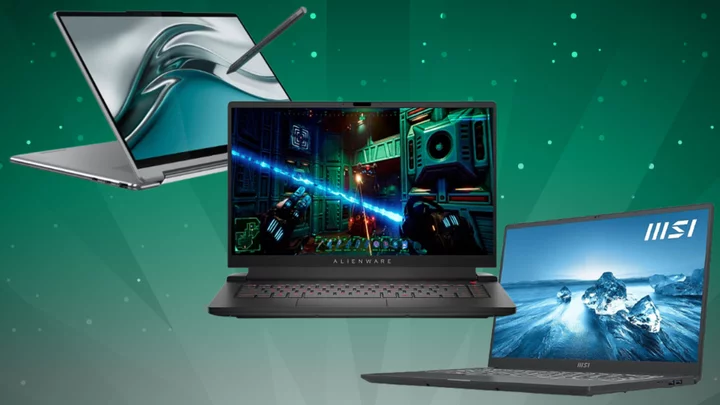
The Best Laptop Deals for May 2023
Has it been a while since your last laptop upgrade? Advances in screen resolution, memory
2023-05-16 03:16
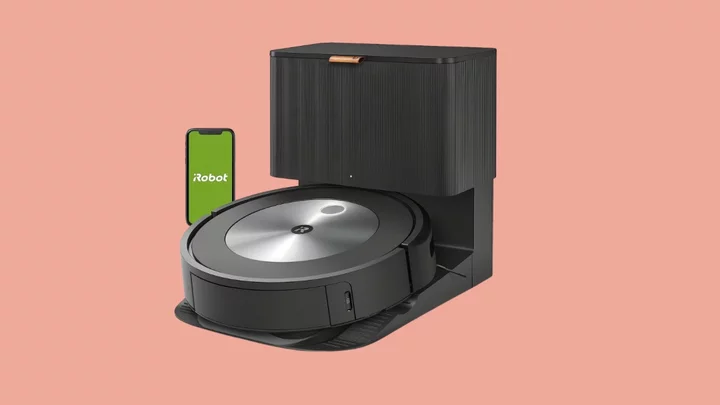
The Roomba j6+ robot vacuum is half-price for Prime Day
TL;DR: The iRobot Roomba j6+ robot vacuum is on sale for $399.99 this Prime Day,
2023-07-12 16:15
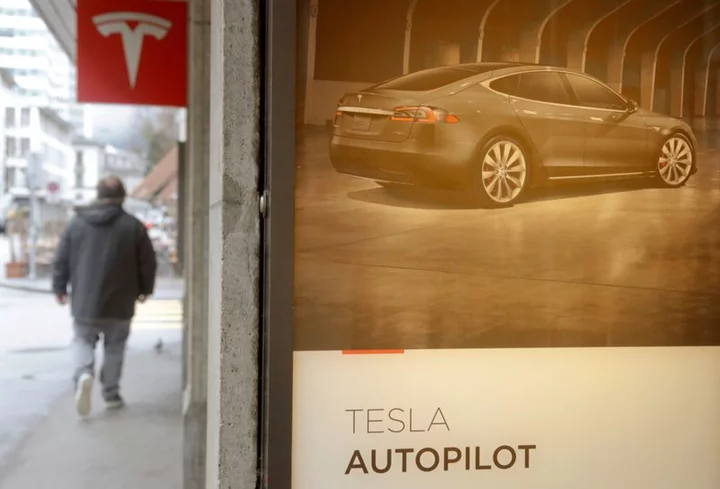
Judge finds evidence that Tesla, Musk knew about Autopilot defect
By Hyunjoo Jin and Dan Levine (Reuters) -A Florida judge found "reasonable evidence" that Tesla Chief Executive Elon Musk and
2023-11-22 10:50

Tucker Carlson’s Twitter show is haemorrhaging viewers with 85% drop from first episode, reports say
Tucker Carlson’s Twitter show has reportedly suffered a significant drop in viewership since his debut episode of Tucker on Twitter. Journalist Matt Binder tweeted the number of video views the former Fox News host has garnered since his Twitter show began on 6 June. While his first show attracted 26.7m video views, the subsequent episode attracted half as many: 13.9m. His most recent episode, his eighth, only garnered 3.8m video views, according to Binder. It counts as a “view” if someone watched the video for more than two seconds. Media Matters senior fellow Matthew Gertz also calculated the views per posts, noting a significant decline since Carlson’s show launched. Although the first post generated 120m views, his most recent only generated 8.6m. Carlson was fired from Fox News — for reasons that reportedly remain unknown to the network’s former superstar. In March, one month before his termination, Carlson averaged 3.3m viewers per show, according to Nielsen. The social media platform’s views aren’t necessarily equivalent to broadcast news views. According to Twitter, a post view is tallied when “anyone who is logged into Twitter who views a Tweet counts as a view, regardless of where they see the Tweet (e.g. Home, Search, Profiles, etc.) or whether or not they follow the author. If you’re the author, looking at your own Tweet also counts as a view.” The views are also not always from unique viewers, the social media giant noted. Carlson may have joined Twitter at a particularly turbulent time for the platform, after Elon Musk took over. Mr Musk’s policies have sparked a lot of criticism from users as well as a Congressional investigation. Things may have gotten more complicated last week after the “Twitter killer” app was introduced. Threads, a rival platform created by Mark Zuckerberg, comes as many fed-up Twitter users are threatening to leave Mr Musk’s platform. “I don’t know why I was fired. I really don’t. I’m not angry about it. I wish Fox well,” Carlson said during a recent podcast interview. Fox News reached a massive $787m settlement with Dominion Voting Systems after spreading false statements about the voting machine company. His former employer sent him a cease-and-desist letter, to which Carlson’s lawyer replied, he will “not be silenced.” The Independent has reached out to Carlson and Twitter for comment. Read More Tucker Carlson doesn’t know why he was fired from Fox News but suggests his views on Ukraine were a ‘red line’ Fox News ousts eight remaining Tucker Carlson show staff as Jesse Watters takes over primetime spot Fox reaches $12m settlement with former producer who sued company over ‘toxic’ workplace
2023-07-11 03:49
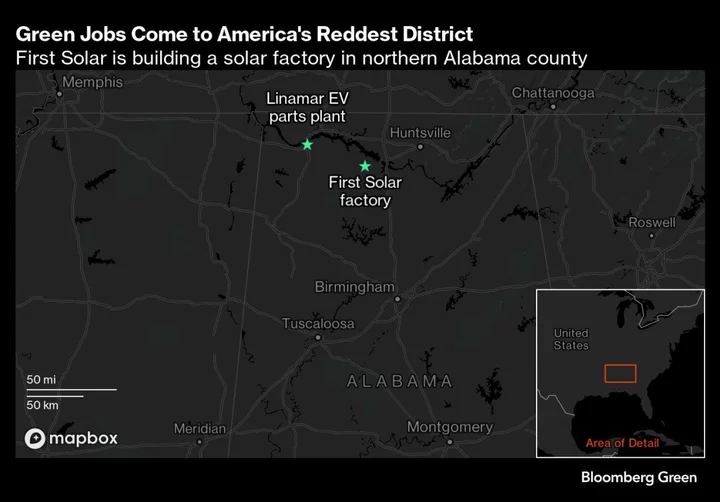
Deep in Trump Country, Biden Plan Creates Hundreds of Green Jobs
The papermill in Courtland is gone. The railcar factory in Cherokee too. Here in north Alabama, people are
2023-11-01 18:46
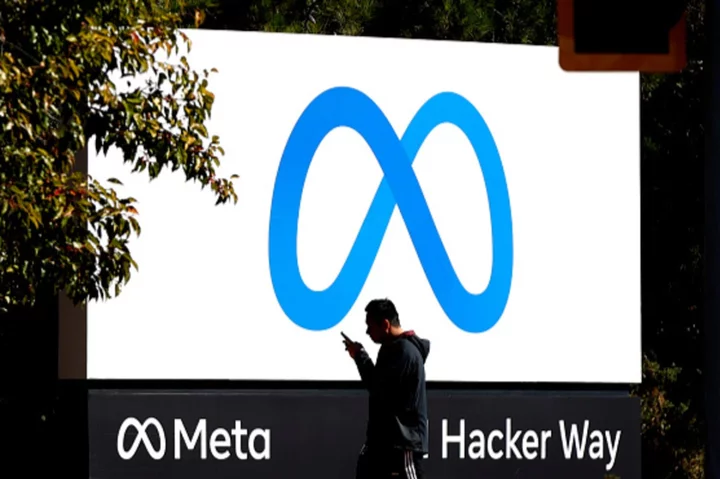
Meta launches paid-for version of Instagram and Facebook
Meta will launch a paid-for, subscription-based version of Facebook and Instagram. The company will allow people to pay up to €13 to have no ads appear on those apps. The change has been made to comply with European Union regulations, it said. As such, it will only be available to people in the EU, the European Economic Area and Switzerland. The monthly subscription plans for users in the EU, European Economic Area and Switzerland, will cost 9.99 euros ($10.58) for web users, while iOS and Android users will have to shell out 12.99 euros a month. The difference is to account for the fees taken by Apple and Google for payments on its platforms, Meta said – a move that follows a similar price difference for Twitter’s premium offering. The EU regulations threaten to curb Meta’s ability to personalize ads for users without their consent and hurt its major revenue source. Users across the world will continue to be able to use the site for free, and will see no change to their experience as a result, Meta said. But offering the paid-for subscription version allows Meta to comply with “the requirements of European regulators”, the company said, after a recent ruling. Having the option of paying for a version of Facebook and Instagram with no ads means that people will have more clearly consented to having their data used for marketing, Meta suggested it in its announcement. That in turn means it will better comply with European regulations, it said. The world’s most popular social media network has been under antitrust pressure in the EU. In July, it lost its fight against a German data curb order as Europe’s top court backed the German antitrust watchdog’s power to also investigate privacy breaches. Offering a choice between a free, ad-supported plan and an ad-free paid subscription might lead to users opting for the former, helping Meta to comply with the regulations without affecting its ad business. Meta was fined 390 million euros earlier this year by Ireland’s Data Privacy Commissioner, and was told it cannot use the so-called “contract” as a legal basis to send users ads based on their online activity. The company later said it intended to ask users in the EU for their consent before allowing businesses to target ads in order to address evolving regulatory requirements in the region. Additional reporting by agencies Read More Threads is not dying, Mark Zuckerberg insists Letitia James and 32 other attorneys general sue Meta for ‘harming youth’ People’s Instagram posts are showing where they are not expected
2023-10-30 23:54

Native VPN Support Comes to Apple TV With tvOS 17
Apple is set to allow VPN apps on the Apple TV App Store with the
2023-06-11 08:47
You Might Like...
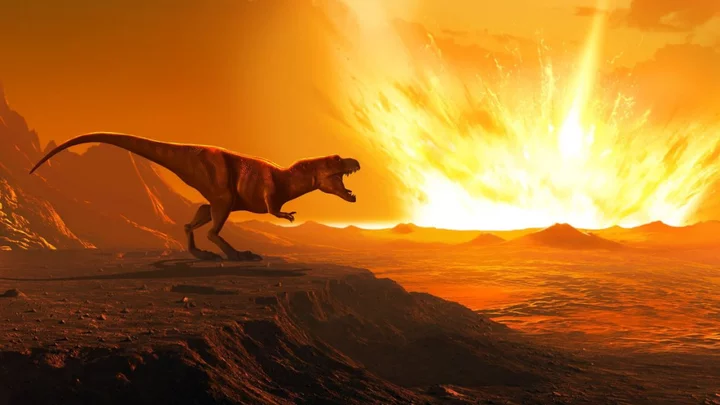
Dinosaurs still exist on other planets, say scientists

Fans miss 'singer Katy Perry', slam 'American Idol' judge for 'spamming social media' with brand promotion

OpenAI may have made a ‘dangerous’ artificial intelligence discover that led to chaos, Elon Musk says
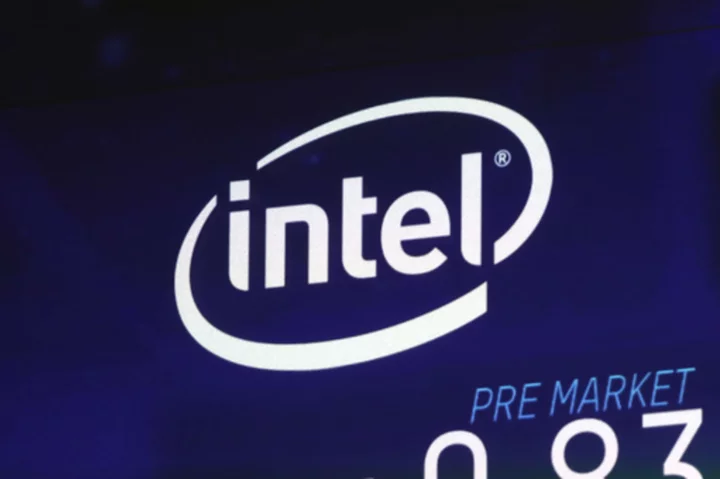
EU hits Intel with $400 million antitrust fine in long-running computer chip case

Elon Musk reacts to xQc's live Twitter videos' feedback after shower stream: ‘Needs refinement’
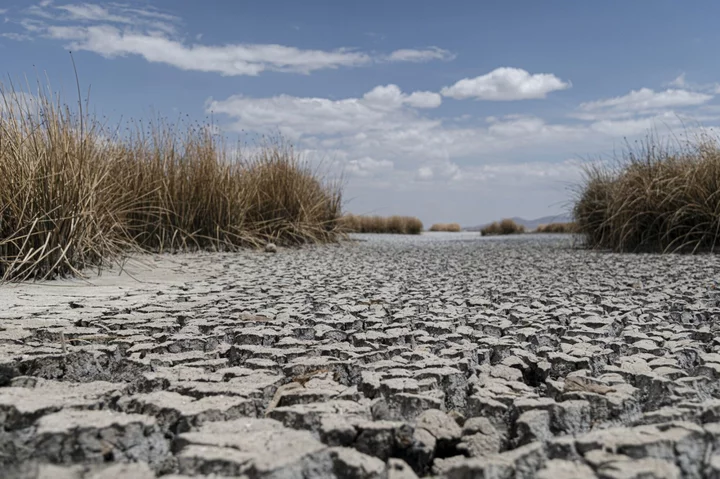
‘No One Is Safe From Climate Change’ After Hottest 12 Months Ever Recorded

Nintendo warned over Legend of Zelda movie

FC 24 Trailblazer Center Back Evolution: How to Complete, Best Players to Use
